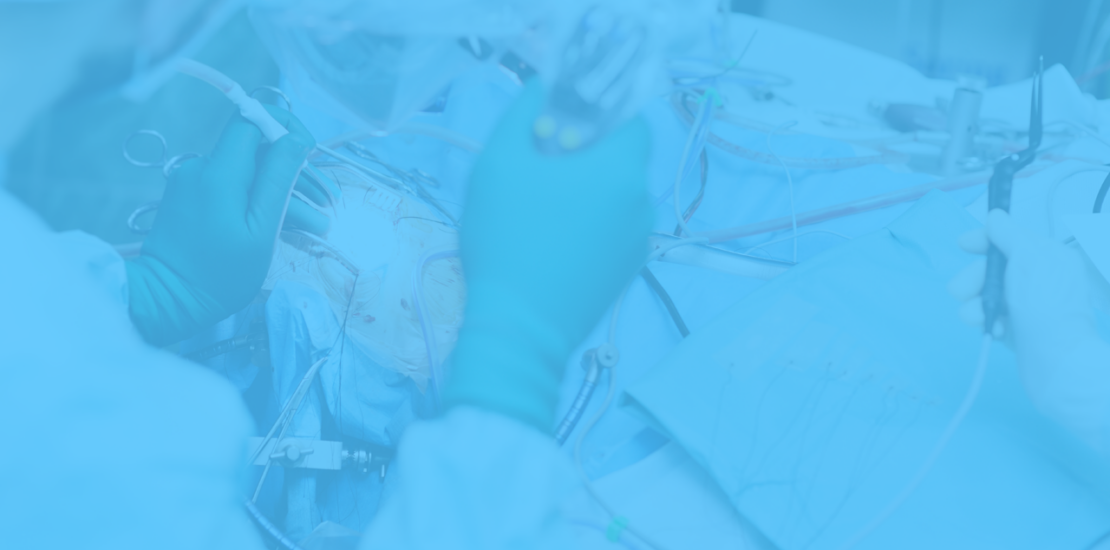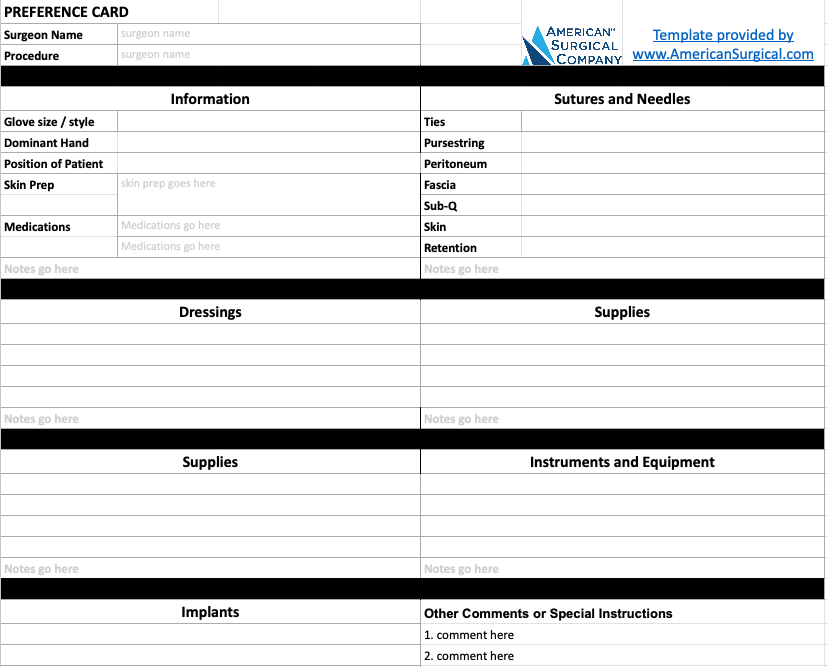- April 19, 2023
- Posted by: American Surgical
- Category: Blog

Surgeon preference cards are an essential tool in streamlining surgical procedures in operating rooms (ORs) worldwide. They are designed to help OR staff, including nurses, surgical technicians, and anesthesiologists, prepare for and perform surgery with ease and efficiency.
A surgeon preference card is essentially a customized list of a surgeon’s preferred surgical instruments, equipment, and supplies required for a specific surgery. The card is typically created by the surgeon, with the help of the OR staff and surgical supply companies. It includes details such as instrument names, sizes, and quantities, as well as specific preferences for positioning of equipment and supplies in the OR.
Having a surgeon preference card in place can significantly reduce OR setup time, minimize surgical delays, and improve surgical outcomes. This is because the card ensures that all necessary equipment and supplies are in place before the surgery, reducing the need for staff to search for and gather items during the procedure. This, in turn, reduces the risk of errors and improves efficiency, allowing the surgical team to focus on the patient’s care.

Surgeon preference cards can also help OR staff anticipate surgeons’ needs and preferences, allowing them to anticipate any issues and provide the best possible care. In addition, they can be easily updated to reflect changes in equipment or surgical techniques, ensuring that the surgeon’s preferences are always up-to-date.
To create a surgeon preference card, OR staff typically work with surgical supply companies to ensure that all necessary equipment and supplies are available. They may also work with the surgeon to identify any special requirements, such as equipment positioning or specific surgical techniques. Once the card is created, it is shared with all relevant staff members, including nurses, surgical technicians, and anesthesiologists.
In conclusion, surgeon preference cards are a vital tool in modern surgical procedures. They help ensure that all necessary equipment and supplies are available and that the surgical team can focus on providing the best possible care for the patient. By streamlining OR setup and reducing the risk of errors, surgeon preference cards are improving surgical outcomes and changing the face of modern surgery.
Download a free template

The concept of surgical preference cards has been around for decades, and it is difficult to attribute the invention of preference cards to a specific person or entity. However, the use of preference cards in surgical settings gained significant momentum in the 1980s, as hospitals and surgical centers began to prioritize efficiency and standardization in their operations.
One of the early proponents of preference cards was Dr. Arnold Advincula, a gynecologic surgeon and healthcare administrator who recognized the importance of standardization in surgical procedures. In the early 2000s, Dr. Advincula developed a software application called Preference Card System (PCS) to help streamline the preference card creation and maintenance process. PCS is still used in many hospitals and surgical centers today.
Other software companies, such as Censis Technologies and Surgical Information Systems (SIS), also developed preference card software applications that are widely used in the healthcare industry. These applications enable surgical teams to create and manage preference cards electronically, streamlining the process and ensuring that the most up-to-date information is available at all times.
Surgical preference cards format can vary depending on the preferences of the surgeon and the needs of the surgical team. However, there are some general guidelines that can be followed to create an effective preference card:
- Header: The top of the card should include the surgeon’s name and the procedure name.
- Procedure Details: This section should provide details about the procedure, such as the expected duration, the type of anesthesia required, and any special considerations or precautions that need to be taken.
- Instrument List: This section should provide a list of all the instruments needed for the procedure, including their names, sizes, and quantities.
- Equipment List: This section should list any equipment that the surgeon prefers to use for the procedure, such as surgical lights, electrocautery machines, and suction devices.
- Supply List: This section should list any supplies needed for the procedure, such as gauze, sutures, and drapes.
- Positioning: This section should provide information about the positioning of the equipment and supplies in the OR, such as the placement of the Mayo stand or the location of the instrument table.
- Additional Notes: This section should provide space for any additional notes or preferences that the surgeon has regarding the procedure or the equipment.
- Revision History: This section should provide a record of any revisions or updates made to the preference card, including the date and the reason for the change.
It is important to note that the format of surgical preference cards can vary depending on the surgeon’s preferences and the needs of the surgical team. The most important thing is to create a clear, concise, and accurate preference card that enables the surgical team to provide the best possible care to the patient.
The AORN offers 10 tips to keep your pick lists accurate and up to date.
